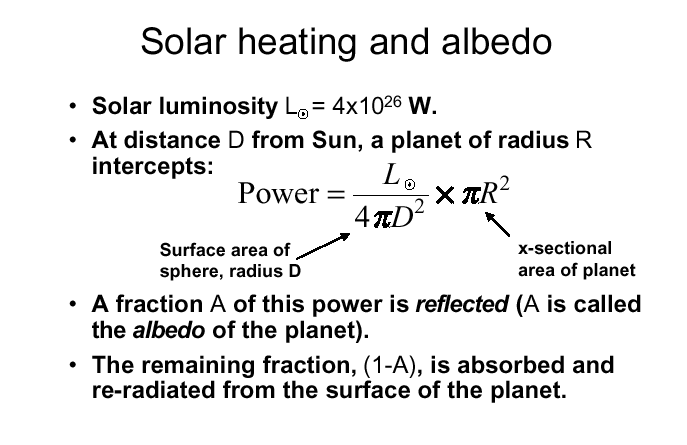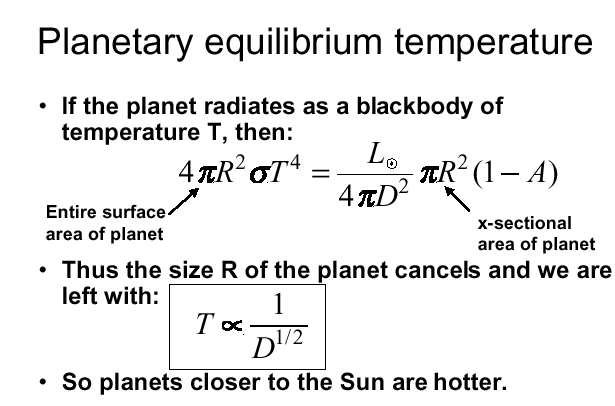The simplest case is a planet without an atomsphere so we start with that and simply balance received flux vs outgoing flux. The received flux is simply:
What we wish to do is to derive a simple expression for how the atmosphere modifies the temperature of a planetary surface Before doing this, we need to make some assumptions about our atmosphere.
These assumptions allow us to treat the atmosphere as a thin, uniform
slab of material at constant density and temperature.
First some constants:
Going back to the planetary equilibruim temperature we see that
For A = 0.3 one gets T = 254K |

